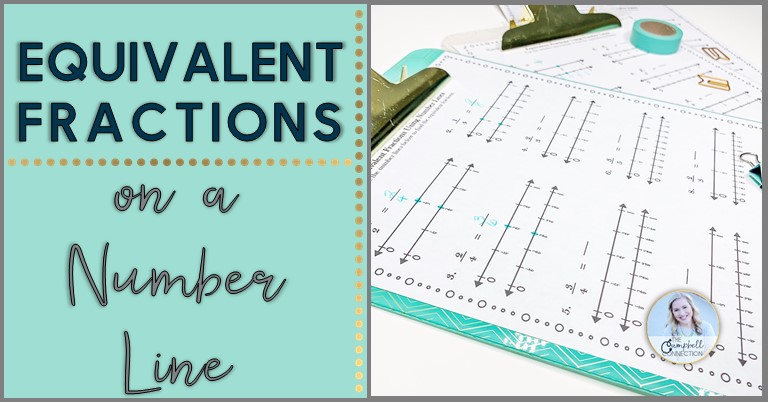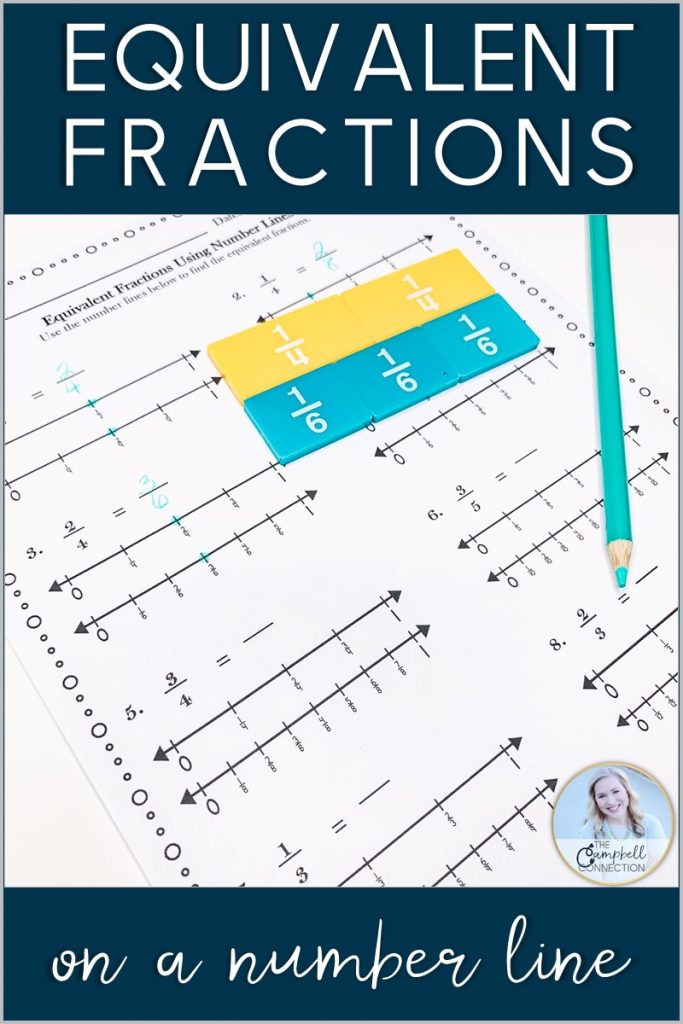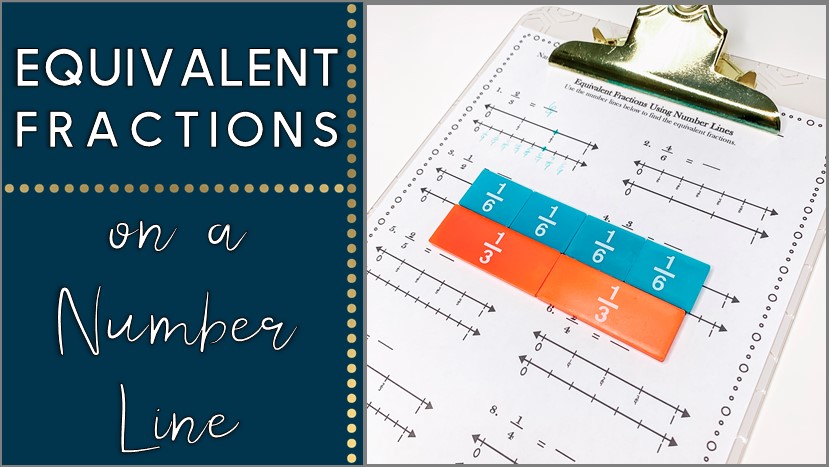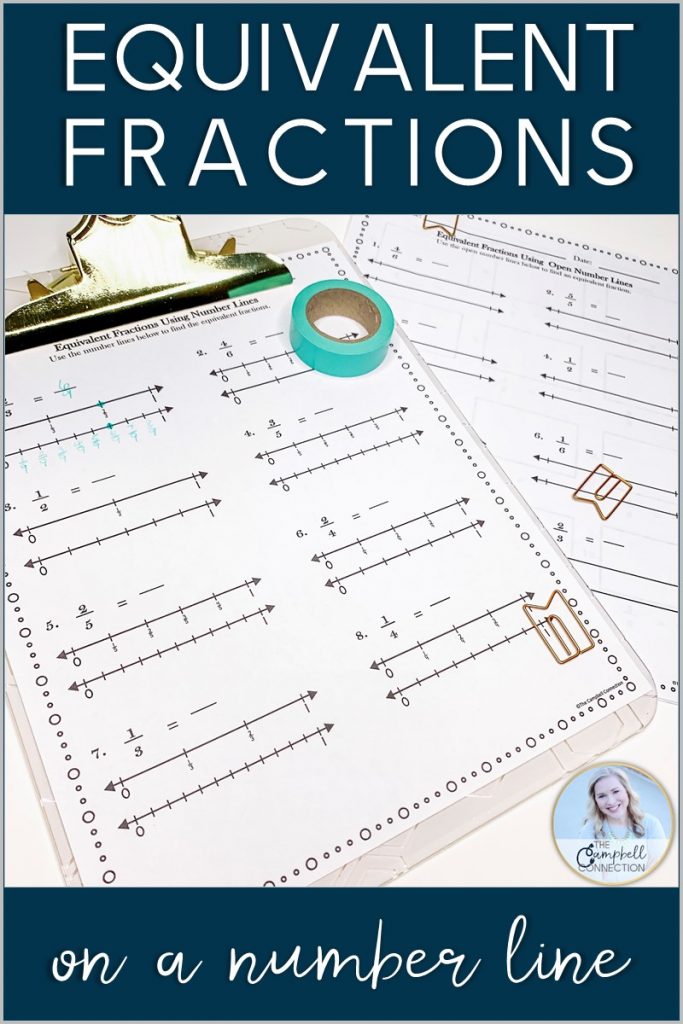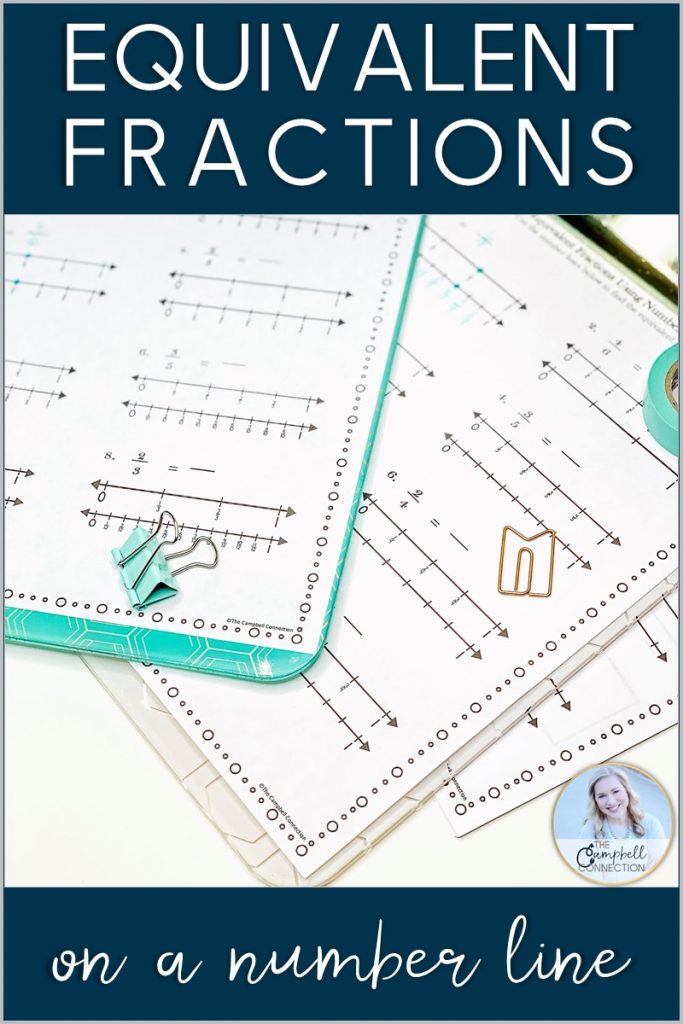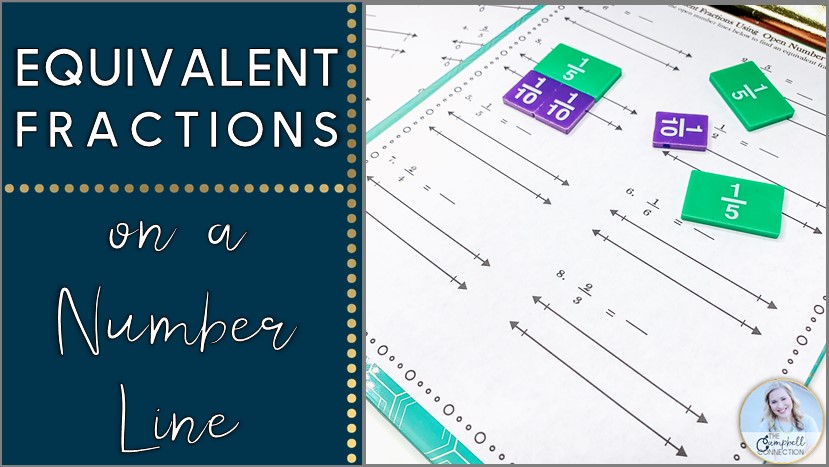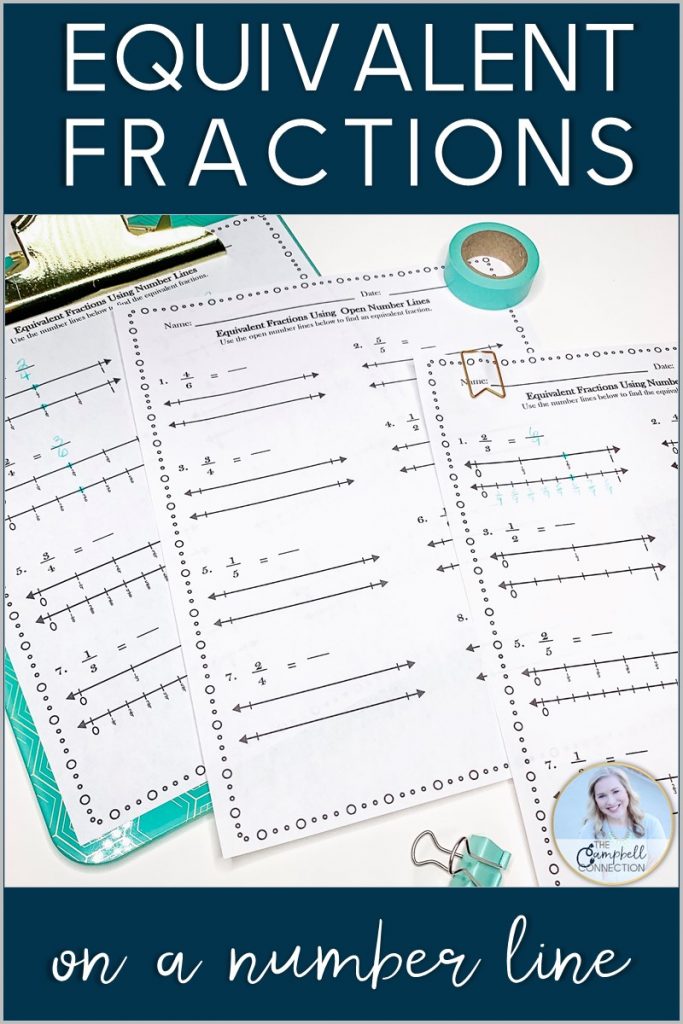Equivalent Fractions on a Number Line
Every third-grade teacher knows that teaching equivalent fractions on a number line is a must, but how do you actually teach it? I am here to help you out! I totally know the feeling of sitting in a meeting thinking, what are they even talking about? Teaching equivalent fractions with number lines can be a real head scratcher. Not just for the students, but the teachers too! Trust me, if I could make this topic more exciting I totally would! I am not a magician, but I am going to break it down for you and show you exactly how equivalent fractions using a number line is really not that scary. While it might not be the most thrilling of topics, I will try and not make it too painful. Let’s dive right in and start talking equivalent fraction number lines!
Wait a minute! I know what you are thinking. When teaching equivalent fractions using a number line get rid of the fraction manipulatives? Nope, not at all! Actually, I am telling you the complete opposite, because we all know how important it is for students to use manipulatives when learning math concepts. Just because you are now teaching equivalent fractions with a number line doesn’t mean you throw everything else you know out the window. Just think of using number lines as an additional tool in your equivalent fractions tool belt, and not something new that means you have to drop everything else. Math manipulatives are still where it is at, and they will help out a lot when teaching equivalent fractions using a number line. Here are fraction bars that I love! Math Playground and Math Learning Center both have virtual fraction bars that are easy to use!
Start with the Basics
Your students should first explore equivalent fractions using fraction bars, because a tactile learning experience in math is crucial to a deeper understanding. Once you feel your students are comfortable with the fraction bars, then they can move into using open number lines, but let’s not get crazy and just release the wolves! Start small, and use the fraction bars in tandem with the open number lines. If you are not familiar with the term open number line, it is just a number line that is blank. It starts at zero and ends with one, and it is your job to fill in the rest, hence the open part.
Like the above title says, start with the basics. It is not time to just hand your students open number lines. You would probably be met with blank stares and hands raised. Start with showing an equivalent fraction using fraction bars, then give your students the number lines with the fractional parts already partitioned and labeled. Show the relationship between the fraction bars and the equivalent fractions on the number lines. This is a process that can be done over and over again until a connection is made.
Equivalent Fractions with a Number Line
You have put in the work. Walked your students through the process of exploring tactile manipulatives and provided equivalent fractions number lines for them that are already filled in with the fractional parts. Now it is time to pull back a little bit. The key to teaching equivalent fractions on a number line is to give a little at a time. Remember if you pull all of the support away at once your students will struggle. I know it can be slow and painful sometimes, but as cheesy as it is, slow and steady wins the race. Now provide your students with the equivalent fraction number lines partitioned into equal parts, but not labeled with the fractional parts. Remember you can still use the fraction bars for those students that struggle to see the parts of a whole on a number line.
Now it’s your students turn to show what they know. Sorry, I couldn’t resist using that phrase. Let them practice labeling the fractional parts on an open number line that you have marked for them. The key is to let your students feel successful and providing them with the number lines partitioned but not labeled will help them have success which will bring up their confidence. When students are confident they are more willing to take risks, and that is when learning occurs.
You and your students have put in the hard work. You have been gradually releasing the control one step at a time. Now give your students a blank open number line and see what they can do. Let them work together to find equivalent fractions using number lines. Give them fraction bars if they still need them. Even though you have prepped your students for this, it is still going to be a little painful, and at is ok! It is important to emphasize to them that fractions are equal parts, and equivalent fractions on a number line need to show that. This can be tricky for both your perfectionists and your more casual learners. Try to encourage all of your students to do their best. When they really get the hang of it have them free draw their own number lines. Teach your students that this is a strategy they can always lean on.
Equivalent Fractions with Number Lines Final Thoughts
Well, there you go. All of my equivalent fractions how to strategies in one place! Want more ideas on this topic? Click here for a post on Equivalent Fractions Games and 5 Tips for Teaching Equivalent Fractions.
Teaching how to find equivalent fractions on a number line is a slow and sometimes painful process. If you build a classroom community establishing that you and your students are in this together, I know it will make it more fun. Use fraction bars and open number lines. Do not be afraid to get a little messy while you learn and explore! Need some activities to help make your life easier when teaching equivalent fractions on a number line?
Still want more? Click here for my guide on the 5 Equivalent Fractions Hacks.

